No products in the cart.
India Moon Landing
Background of Chandrayaan 3: A Beacon of India’s Space Exploration
ISRO’s Chandrayaan 3 mission is a shining example of India’s unwavering commitment to space exploration. This mission was not merely about achieving a moon landing with a spacecraft; it was a grand display of India’s technological prowess and sheer determination. The triumphant success of this mission has catapulted India into an elite league of nations with the capability to undertake complex space missions.
The odyssey of Chandrayaan 3 was characterized by meticulous planning, stringent testing, and an unmatched dedication from the ISRO team. The path to success was riddled with challenges, but with each hurdle, the team responded with resilience and innovation, culminating in the mission’s ultimate success. Chandrayaan 3 stands as a testament to India’s space exploration capabilities and its forward-looking vision.
Embarking on a 40-day voyage from the Sathish Dhawan Space Center in Sriharikota, the mission surmounted previous setbacks and etched its name in history. Chandrayaan 3’s success has ignited a fervor for space exploration among the Indian populace and has laid the groundwork for future space technology endeavors.

India’s Space Ambitions: A Journey Through Time
India’s ambitions in space exploration are deeply entrenched. Since the dawn of its space program, India has envisioned itself as a formidable force in the global space community. Guided by visionary leaders and scientists, India’s space endeavors have consistently aimed at pushing the envelope and achieving the remarkable.
The Chandrayaan 3 moon landing reaffirms India’s capabilities and lofty ambitions. This mission is not only a testament to India’s burgeoning technological advancements but also a reflection of its aspirations to be a dominant player in space exploration. Chandrayaan 3 is not just a technological marvel; it’s a symbol of national pride, underscoring India’s capacity to innovate, adapt, and surmount challenges.
Supported by a succession of governments and spearheaded by dedicated scientists, India’s space program has made monumental progress over the decades. Through missions like Chandrayaan 3, India is not merely showcasing its capabilities but is also signaling its intent to be a significant contributor to global space research.
Moon Landing: Key Insights and Takeaways
The moon landing of Chandrayaan 3 was a monumental milestone, symbolizing more than just a technological achievement. It was a beacon of national pride, epitomizing India’s ability to innovate, adapt, and overcome challenges. The mission’s success has reverberated globally, firmly placing India on the map of elite space-faring nations.
A key takeaway from this mission is the spirit of perseverance. After the partial success of Chandrayaan 2, ISRO imbibed the lessons, fine-tuned their approach, and clinched success with Chandrayaan 3. The mission also highlighted the importance of international collaboration in space research, with numerous nations extending their accolades to India for its accomplishment.
Beyond the technical facets, the Chandrayaan 3 mission holds broader implications for both India and the global community. It’s not merely about achieving a moon landing; it’s about India’s capability to innovate, adapt, and lead in a domain of global significance. This mission has paved the way for future collaborations, research, and exploration, heralding new horizons for space research.
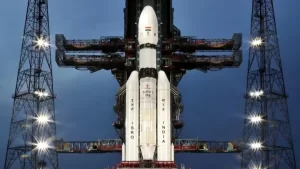
ISRO: The Torchbearer of India’s Space Missions
The Indian Space Research Organisation (ISRO) is the embodiment of India’s aspirations in space exploration. From its nascent stages, ISRO has metamorphosed into a powerhouse, launching satellites, probing celestial bodies, and making India a proud contender on the global stage. Every mission undertaken by ISRO is a testament to its dedication, expertise, and the spirit of exploration that permeates its ranks.
Chandrayaan 3, one of ISRO’s most audacious projects, showcased the organization’s capability to execute intricate missions. The meticulous planning, rigorous testing, and the unwavering determination of the ISRO team propelled this mission to resounding success. As the world looked on, ISRO reaffirmed its position, solidifying its place among the world’s premier space agencies.
The jubilation that erupted at mission control upon the triumphant landing of Chandrayaan 3 was not just for a mission accomplished. It was a celebration of the journey, the challenges surmounted, and the relentless pursuit of excellence that epitomizes ISRO. The organization’s achievements serve as an inspiration, not just for India but for the global community.
Jawaharlal Nehru: The Architect of India’s Space Vision
Jawaharlal Nehru, India’s inaugural Prime Minister, was a visionary leader who discerned the potential of space exploration. Under his aegis, India embarked on its cosmic journey, laying the groundwork for a space program that would one day make the nation stand tall. Nehru’s conviction in the power of science and technology as catalysts for progress was pivotal in shaping India’s early space endeavors.
Nehru’s vision for India’s space program transcended mere celestial aspirations. It was about harnessing the boundless potential of space for societal advancement. He envisaged space technology as an instrument for societal development, a means to address some of the pressing challenges confronting the nation. This vision, espoused by Nehru, continues to steer India’s space missions, ensuring alignment with the nation’s developmental objectives.
Today, as India revels in milestones like Chandrayaan 3, it’s imperative to reminisce about the foundational principles laid down by stalwarts like Nehru. His foresight and conviction in the power of space exploration have charted the course for India’s triumphs in space, inspiring generations to dream audaciously and reach for the stars.
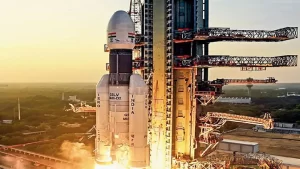
Bhupesh Baghel’s Perspective on the Achievement
Bhupesh Baghel, the dynamic Chief Minister of Chhattisgarh, has consistently championed India’s feats on the global stage. The success of Chandrayaan 3 was no exception. For Baghel, this mission transcended a mere technological achievement; it was a symbol of national pride, a testament to India’s capabilities and aspirations in the realm of space exploration.
Echoing the sentiments of millions of Indians, Baghel underscored the collective nature of this achievement. He posited that the success of Chandrayaan 3 was not solely ISRO’s or the scientists’ but was a triumph for every Indian. Such accomplishments, in Baghel’s view, serve as a testament to what India can achieve when it sets its sights on a goal, showcasing the nation’s potential on the global stage.
In his remarks, Baghel also delved into the broader implications of the moon landing. Beyond the immediate success, missions like Chandrayaan 3 chart the course for future endeavors, unveiling new avenues for research, collaboration, and exploration. For visionaries like Baghel, the sky is not the boundary; it’s merely the commencement.
Global Fascination with the Lunar South Pole
The lunar south pole, distinguished by its profound craters and perpetual darkness, has piqued the interest of various nations. According to NASA, this region is replete with “mystery, science, and intrigue.” The allure of the lunar south pole is not just its unexplored terrain but the potential it harbors for scientific discovery. With profound craters, termed ‘cold traps’, the moon’s south pole is anticipated to host a vast reservoir of water ice in perpetually shadowed regions.
India’s Chandrayaan-3 has made significant inroads by becoming the first mission to achieve a soft landing in this specific region, marking India as the fourth nation to accomplish a soft landing on the moon. However, other nations are hot on its heels. Russia’s Luna-25, despite its challenges, and the US’s proposed crewed mission in 2025, coupled with China’s ambitions, underscore the global race to explore this enigmatic part of the moon.
The challenges of landing on the lunar south pole are formidable. Transporting equipment from Earth to the Moon necessitates overcoming Earth’s gravitational pull, and the bulkier the equipment, the more resources are required. Despite these challenges, the potential rewards, such as the discovery of water and insights into the solar system’s origins, render the lunar south pole a sought-after destination for space missions.
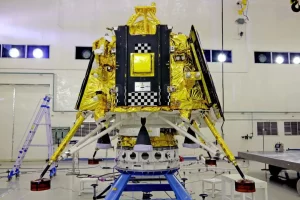
The Significance of Water on the Lunar South Pole
The discovery of water on the lunar south pole has elicited excitement among scientists and space aficionados. These craters, untouched by sunlight for eons, offer an untarnished record of the solar system’s origins. The implications of discovering water extend beyond mere scientific curiosity. Water on the moon can be harnessed into vital resources, potentially revolutionizing future space missions.
According to TV Venkateswaran, a scientist at Vigyan Prasar, the water on the lunar south pole holds immense significance for future space exploration. It can be converted into potable water, oxygen, and even hydrogen for rocket fuel. Moreover, the perpetually sunlit areas in the region provide optimal conditions for the electronics onboard rovers and landers, ensuring their efficient operation.
The discovery of water also lays the groundwork for potential human settlements on the moon. With the capability to transform water into essential resources, the dream of establishing lunar bases becomes more tangible. Such advancements could revolutionize space exploration, enabling prolonged lunar missions and even interplanetary voyages.
Challenges and Triumphs of Lunar Exploration
Lunar exploration, while promising, is fraught with challenges. From the technical intricacies of landing on the moon’s treacherous terrain to the logistical issues of transporting equipment, every facet of a lunar mission demands meticulous planning and execution. The lunar south pole, with its distinct environment, presents its own set of challenges. NASA administrator Bill Nelson remarked that the area is far more treacherous than the site of the inaugural moon landing in 1969.
Despite these challenges, the rewards of lunar exploration are boundless. The moon, especially its south pole, conceals secrets that can offer insights into the origins of our solar system. Moreover, the potential resources on the moon can pave the way for future space missions, diminishing our reliance on Earth-based resources.
The odyssey of lunar exploration is a testament to human ingenuity and determination. While challenges abound, the potential discoveries and advancements in space technology render the journey worthwhile. As nations vie to explore the moon, it serves as a reminder of our collective quest for knowledge and the boundless possibilities that space exploration offers.
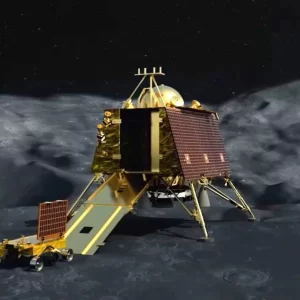
The Odyssey of Chandrayaan-3
Chandrayaan-3’s voyage to the moon was not merely a mission; it epitomized India’s resilience and determination in space exploration. Following the partial success of Chandrayaan-2 in 2019, where the lander and rover perished but the orbiter endured, ISRO assimilated the lessons and rebounded with Chandrayaan-3. This mission accomplished a successful landing near the scarcely explored south pole of the Moon, marking India as the fourth nation to achieve a soft landing on the Moon.
The mission’s success was celebrated with gusto across India, with Prime Minister Narendra Modi proclaiming, “India has now set foot on the Moon.” The achievement was not merely a technological marvel but also a symbol of national pride. The mission’s success was a collective endeavor, with ISRO chief Sreedhara Panicker Somanath attributing it to generations of ISRO scientists. The mission’s success also underscored the challenges of lunar exploration, especially in the south pole region, characterized by an uneven surface replete with craters and boulders.
Chandrayaan-3’s success has set the stage for future lunar missions. With its primary objective to search for water-based ice, which could sustain human habitation and be utilized as propellant for spacecraft destined for Mars and other locales, the mission holds significant implications for the future of space exploration. The mission also seeks to comprehend the Moon’s physical attributes, atmosphere, and tectonic activity, offering insights into the celestial body’s enigmas.
The Global Race to the Moon
India’s accomplishment with Chandrayaan-3 transpires amidst a renewed global interest in lunar exploration. While India basks in its success, it’s crucial to acknowledge that other nations are also making headway in their lunar missions. Russia’s Luna-25 spacecraft, for instance, encountered challenges and crashed into the Moon. These missions underscore the intricacies and challenges of lunar exploration, especially in regions like the south pole.
The Moon, often dubbed as a portal to deep space, conceals secrets that nations are eager to decipher. The lunar south pole, with its potential reserves of water ice, is of particular interest. Water on the Moon can revolutionize space missions, providing essential resources for extended lunar stays and interplanetary voyages. As nations race to explore the Moon, it’s evident that the celestial body will remain a focal point of global space exploration endeavors.
The global race to the Moon is not solely about national pride or technological prowess. It revolves around collaboration, understanding, and the shared objective of unraveling the mysteries of our cosmos. As more nations chart their lunar missions, the Moon will continue to epitomize human ingenuity, determination, and the collective quest for knowledge.
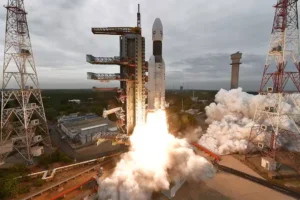
Future Implications of Chandrayaan-3’s Success
The triumph of Chandrayaan-3 has broader implications for India and the world. Beyond the immediate achievement, the mission lays the groundwork for future endeavors in space exploration. With the discovery of water-based ice on the Moon, the possibilities for human habitation and interplanetary travel become more tangible. The mission’s findings could revolutionize our understanding of the Moon and open up new avenues for research and exploration.
Chandrayaan-3 also bolsters India’s position in the global space community. With this mission, India has showcased its capabilities, resilience, and determination. The mission serves as a foundation for future collaborations, research, and exploration, positioning India as a pivotal player in global space endeavors. The mission’s success also serves as an inspiration for future generations, kindling a passion for space exploration and science.
Furthermore, Chandrayaan-3’s findings will contribute to global knowledge about the Moon. The data and images relayed back to Earth will offer insights into the Moon’s physical attributes, atmosphere, and tectonic activity. As scientists scrutinize this data, the mission will continue to illuminate the mysteries of the Moon, enriching our understanding of the cosmos.
The Exuberant Celebration of Chandrayaan-3’s Stellar Success
Across the vast expanse of India, a wave of euphoria swept the nation as Chandrayaan-3, under the esteemed banner of ISRO, executed a flawless soft landing near the enigmatic South Pole of the moon. This wasn’t merely a demonstration of India’s formidable technological might but stood as a resounding testament to the nation’s unwavering unity and indomitable spirit. “India has etched its mark on the moon,” proclaimed ISRO’s visionary chief, S Somnath, resonating with the heartfelt emotions of billions.
The digital realm of social media platforms was awash with a deluge of congratulatory messages. From every corner of India, citizens from diverse backgrounds united in jubilation, celebrating this monumental achievement. The esteemed Prime Minister of India, Narendra Modi, even amidst his commitments in South Africa, couldn’t contain his exhilaration. He fervently expressed, “This unparalleled moment heralds the triumphant clarion call of a resurgent India.” Indeed, Chandrayaan-3’s success wasn’t just an individual victory; it mirrored the relentless dedication, talent, and zeal of countless souls.
On the global front, the reverberations of this success were profound. India, with its Chandrayaan-3 mission, etched its name alongside space behemoths like USSR/Russia, the United States, and China, becoming the fourth nation to achieve the remarkable feat of landing a rover on the moon’s surface. This monumental achievement not only amplified India’s stature but firmly positioned it as a formidable contender in the arena of space exploration and research.
Delving into the Significance of the Lunar South Pole Landing
The enigmatic South Pole of the moon has long been a beacon, drawing the attention of global space agencies. The triumphant landing of India’s Chandrayaan-3 in this challenging terrain is especially commendable, considering the intricate complexities of the region and the treasure trove of scientific revelations it promises. Renowned for its potential reserves of water, the South Pole emerges as a focal point for cutting-edge research and exploration.
As Chandrayaan-3’s Vikram lander descended, it stirred a significant amount of lunar dust. The rover, named Pragyan, awaits its grand debut, poised to commence its exploration once the dust settles—a process elongated by the moon’s diminished gravitational pull. The strategic choice of this landing site was no mere coincidence. Past endeavors, including the pioneering NASA instrument aboard ISRO’s Chandrayaan-1 in 2009, have hinted at the presence of water in this region, a revelation that could redefine the trajectory of future space missions.
Over the next 14 lunar days, the rover Pragyan is set to relay a plethora of images and intricate data from the moon’s surface. This invaluable information promises to shed light on the moon’s unique physical attributes, its enigmatic atmosphere, and potential resources. The insights garnered from Chandrayaan-3 could very well reshape our perception of the moon and lay the groundwork for subsequent lunar expeditions.
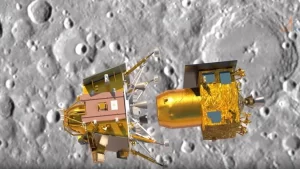
India’s Ascension in the Pantheon of Global Space Exploration
Chandrayaan-3’s resounding success has firmly anchored India’s position in the elite echelons of global space exploration. This mission, while a monumental national achievement, also serves as a clarion call to the world, heralding India’s aspirations and unparalleled capabilities in space research. With this mission, India stands shoulder to shoulder with global powerhouses like USSR/Russia, the United States, and China, all of whom have tasted success in their lunar endeavors.
The path to this pinnacle wasn’t devoid of hurdles. The Chandrayaan-2 mission in 2019, while groundbreaking, faced its share of tribulations. Yet, ISRO, with its characteristic resilience and unwavering determination, gleaned invaluable lessons, paving the way for the triumphant Chandrayaan-3 mission. This success story, replete with its highs and lows, serves as a beacon for future generations, underscoring the virtues of perseverance, innovation, and the insatiable spirit of exploration.
Peering into the future, ISRO has charted an ambitious trajectory. With missions like the Gaganyaan human space flight program and the Aditya-L1 solar exploration mission on the horizon, India is on the cusp of furthering its contributions to global space research, exploration, and discovery.
The Global Ovation for Chandrayaan-3’s Stellar Triumph
The international community was swift in its acknowledgment of India’s unparalleled achievement with Chandrayaan-3. Russia’s esteemed space agency, Roskosmos, extolled India’s success, emphasizing the universal significance of lunar exploration. This sentiment found an echo in the words of the European Space Agency’s director-general, Josef Aschbacher, who lauded the landing as a testament to India’s technological prowess and unwavering determination in space exploration.
South Africa’s President, Cyril Ramaphosa, joined the chorus of accolades, underscoring the mission’s significance for the cohesive BRICS consortium. The euphoria in India was palpable, with the director-general of the Indian Space Association likening the nationwide jubilation to the exhilaration of clinching a World Cup victory.
Chandrayaan-3, while a monumental national achievement, transcended borders to become a global phenomenon. Visionaries, space aficionados, and leaders from across the globe united in their celebration, recognizing the mission’s overarching significance for the future of space exploration. This universal acknowledgment underscores the essence of collaboration and shared aspirations in the vast realm of space exploration.
Chandrayaan-3: A New Dawn for India’s Space Odyssey
The impeccable landing of Chandrayaan-3 on the moon’s South Pole has ushered in a new era for India’s space endeavors. This mission, following the partial success of Chandrayaan-2 in 2019, is a testament to ISRO’s ability to evolve, learn, and scale unparalleled heights.
The nation’s space agency, with its unwavering commitment to excellence, has showcased its prowess, resilience, and innovative spirit.
The Chandrayaan-3 mission, while a significant milestone, is just the beginning. With a slew of ambitious projects on the horizon, India is poised to further its legacy in space exploration, research, and discovery. The world watches with bated breath, eager to witness the next chapter in India’s illustrious space odyssey.
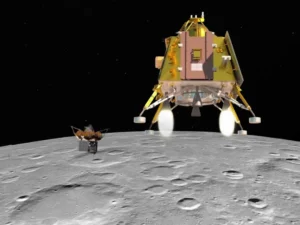
The Role of Key Indian Leaders in the Mission: ISRO’s Guiding Stars
India’s celestial journey, under the auspices of ISRO, has been meticulously sculpted by luminaries who envisioned the boundless possibilities of space exploration. The Chandrayaan-3 mission, a magnum opus of India’s space endeavors, is the crystallization of the dreams of these stalwarts. Vikram Sarabhai, the colossus behind the Indian space program, was instrumental in setting the trajectory for space research in India. The Vikram lander’s triumphant soft landing on the moon’s south pole, bearing his name, is a poetic homage to his legacy.
Leaders from every nook and cranny of India reveled in the success of Chandrayaan-3. Prime Minister Narendra Modi, amidst his digital presence at the event, underscored the monumental significance of this feat for the Indian populace. He illuminated the evolutionary journey of India’s space program since its genesis, kindling the aspirations of myriad young visionaries. The Chandrayaan-3 mission, a brainchild of ISRO, stands as a testament to the tenacity, prowess, and foresight of Indian scientists, and the unwavering vision of India’s leaders like Jawaharlal Nehru and Bhupesh Baghel, Chief Minister of Chhattisgarh.
The role of these paramount leaders in the mission transcends mere accolades. Their unwavering support, sagacious guidance, and visionary foresight have been the bedrock upon which India’s space odyssey has been built. As India, aboard its spacecraft, continues its cosmic voyage, the indelible imprints of these leaders will be celebrated, echoing in the annals of history.
Comparing Chandrayaan-3 with Previous Lunar Missions: A Tapestry of Triumphs and Trials
The Chandrayaan-3 mission, a jewel in ISRO’s crown, is a testament to India’s burgeoning space legacy. However, to fathom its monumental significance, one must juxtapose it against the backdrop of its predecessors. Chandrayaan-1, India’s maiden voyage to the moon in 2008, was a trailblazer, unveiling the presence of lunar water and setting the stage for the odysseys that followed. Chandrayaan-2, despite the tribulations faced by the Vikram lander, bequeathed a treasure trove of data, shaping the narrative of Chandrayaan-3.
The global consortium, with bated breath, monitored the Chandrayaan-3 mission, especially in light of the vicissitudes faced by its antecedent. The mission’s triumphant moon landing, orchestrated by ISRO, is not merely an Indian victory but epitomizes the spirit of resilience and the quintessence of learning from erstwhile experiences. The Chandrayaan-2 mission’s endeavor to alight near the south pole in 2019, though fraught with challenges, sowed the seeds for Chandrayaan-3’s unparalleled success.
The tapestry of India’s lunar missions, woven with challenges and conquests, chronicles the relentless evolution of its space endeavors. Each mission, a chapter in this grand narrative, has enriched the saga of cosmic exploration. Chandrayaan-3, with its impeccable soft landing and the allure of uncharted discoveries, heralds a new epoch in this cosmic chronicle.
Economic and Strategic Implications for India: Beyond the Stars
Chandrayaan-3’s stellar success, under the aegis of ISRO, has ignited a constellation of economic and strategic prospects for India. Economically, this mission magnifies India’s technological acumen, catapulting the nation to the forefront of the global space arena. This celestial conquest can magnetize international synergies, investments, and alliances in space research and ancillary domains. The ripples of this achievement can invigorate sectors like aerospace, electronics, and avant-garde manufacturing, spawning employment vistas and kindling innovation.
Strategically, Chandrayaan-3, a brainchild of ISRO, augments India’s stature in the global space consortium. In an era where nations are awakening to the imperatives of space exploration, India’s moon landing, orchestrated by ISRO, resonates with its unparalleled capabilities and cosmic aspirations. The mission, replete with state-of-the-art technologies, also harbors potential defense and surveillance ramifications. The troves of data gleaned from Chandrayaan-3 can sculpt future defense and reconnaissance satellite missions, bolstering India’s strategic arsenal.
Moreover, the mission’s triumph can sculpt diplomatic tapestries and collaborations. As India etches its name alongside the elite lunar explorers, it can harness this accolade in diplomatic dialogues and global symposiums. This mission accentuates India’s commitment to harmonious space exploration and its alacrity to forge alliances for the collective betterment of humankind.
Conclusion: Chandrayaan-3 – A Celestial Symphony
Chandrayaan-3’s majestic descent near the moon’s south pole, orchestrated by ISRO, is a cosmic concerto for India and the global space fraternity. This mission’s success is a paean to the dedication, tenacity, and resilience of ISRO’s maestros and the broader Indian scientific ensemble. From the vicissitudes faced by its precursor, Chandrayaan-2, to the euphoria enveloping Chandrayaan-3’s triumphant landing, the odyssey has been a melange of peaks and troughs, lessons imbibed, and pinnacles scaled.
The mission has not only elevated India’s stature in the global space consortium but has also kindled a flame of national pride and unity. Visionaries, cosmic aficionados, and denizens have converged in this celestial celebration, cognizant of its ramifications for India and the cosmos. As the rover Pragyaan embarks on its lunar sojourn, it is imbued with the aspirations of a nation, heralding a new dawn in India’s space saga.
Peering into the cosmos, Chandrayaan-3, a masterpiece of ISRO, lays the groundwork for future space odysseys. The insights and revelations from this mission will be the lodestar for imminent lunar expeditions and other cosmic quests. As global nations cast their gaze towards the stars, Chandrayaan-3 stands as a beacon of hope, epitomizing the spirit of exploration, collaboration, and cosmic wonder.
FAQs
1. What is the significance of Chandrayaan-3’s landing near the Moon’s south pole?
Chandrayaan-3’s landing near the Moon’s south pole is monumental as it’s a region less explored by previous missions. The south pole holds potential reserves of water ice, which could support human habitation on the Moon in the future. This discovery, initially made by Chandrayaan-1, has significant implications for future lunar bases and deep space exploration.
2. How does Chandrayaan-3 compare to India’s previous lunar missions?
Chandrayaan-3 builds on the successes and lessons of Chandrayaan-1 and Chandrayaan-2. While Chandrayaan-1 discovered water molecules on the lunar surface, Chandrayaan-2’s Vikram lander faced challenges during its landing attempt. Chandrayaan-3’s successful soft landing showcases the advancements and growth of ISRO’s lunar exploration capabilities.
3. How has the global community reacted to India’s Moon landing?
The global community, including leaders and space agencies, has extended their congratulations to India. The success of Chandrayaan-3 has been recognized and celebrated worldwide, solidifying India’s position in the elite space club alongside the US, the former Soviet Union, and China.
4. What role did key Indian leaders play in the Chandrayaan-3 mission?
Key Indian leaders, including Prime Minister Narendra Modi, have been instrumental in supporting and championing the Chandrayaan-3 mission. Their vision, guidance, and continuous encouragement have played a pivotal role in shaping the trajectory of India’s space endeavors.
5. Why is the Moon’s south pole region considered crucial for future space exploration?
The Moon’s south pole region is believed to have vast reserves of water ice. This water can be utilized for various purposes, from supporting life to serving as a raw material for construction. The presence of water also makes the south pole a prime location for potential lunar bases, which could serve as launchpads for deeper space missions.
6. How does Chandrayaan-3’s success impact India economically and strategically?
Chandrayaan-3’s success positions India as a significant player in the global space industry, attracting international collaborations and investments. Strategically, it strengthens India’s position in the global space community, with potential defense and surveillance implications given the advanced technologies demonstrated by ISRO.
7. What are the future plans of ISRO following the success of Chandrayaan-3?
Following Chandrayaan-3’s success, ISRO plans to build on its lunar exploration endeavors. The data and insights gained from Chandrayaan-3 will be invaluable for upcoming lunar missions and other space exploration projects. ISRO’s vision is to continue pushing the boundaries of space exploration, fostering collaboration, and making significant scientific discoveries.
8. How does Chandrayaan-3’s achievement influence India’s position in global space exploration?
Chandrayaan-3’s achievement bolsters India’s position in global space exploration. By joining the elite club of nations that have achieved a soft landing on the moon, India showcases its technological prowess, determination, and capabilities in space research, fostering a sense of unity and shared aspirations among nations.
Read Further:
- Geo.tv: India’s Chandrayaan-3 Vikram Lander Finally Lands on Moon
- Dawn News Article
- Moneycontrol: Lunar South Pole – Why Nations Are Vying to Plant Their Flags on the Dark Side of the Moon
- Al Jazeera: India Moon Landing Live News – ISRO says Smooth Sailing for Chandrayaan-3
- BBC: News on India’s Chandrayaan-3 Moon Landing
- NDTV: Chandrayaan-3 Lands on Moon – India Joins Elite Space Club
Continue Reading:




